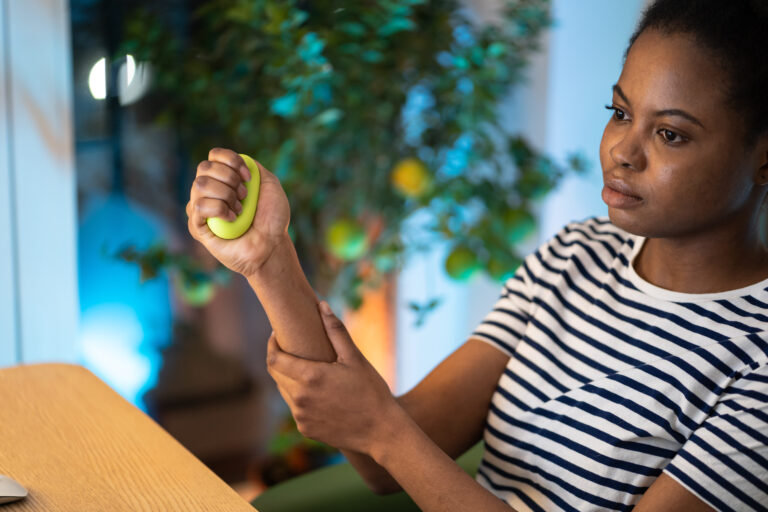Pain when sitting is a common complaint that many people experience, and it can be particularly distressing when it interferes with everyday activities. One of the potential causes of sitting pain is an issue with the pudendal nerve, which runs through the pelvis and is responsible for sensation in the genital and pelvic regions. However, while some individuals may experience sitting pain due to pudendal nerve irritation, it is essential to understand that not all cases of pain while sitting are linked to this nerve. In fact, there are other underlying causes that can contribute to this discomfort, and the myth that sitting pain always indicates pudendal nerve issues needs to be debunked.
In this article, we will explore the relationship between sitting pain and the pudendal nerve, discuss other potential causes of pain while sitting, and provide insight into effective treatment options for those experiencing this condition.
Understanding the Pudendal Nerve and Its Role
The pudendal nerve is a major nerve in the pelvis that plays a crucial role in providing sensory and motor functions to the genital, pelvic, and anal areas. This nerve runs through a complex network of muscles, and when it becomes irritated or compressed, it can cause a variety of symptoms, including pain, numbness, tingling, and discomfort in these regions. Pudendal nerve issues are often associated with a condition called pudendal neuralgia, which occurs when the nerve becomes entrapped or inflamed.
While it’s true that the pudendal nerve can contribute to pain while sitting, it is important to note that sitting pain is not automatically linked to this nerve. Many people who experience discomfort while sitting may mistakenly believe that they are suffering from pudendal nerve problems, leading to unnecessary anxiety and fear. It’s crucial to understand that there are several potential causes of sitting pain, and not all of them involve the pudendal nerve.
Common Causes of Sitting Pain
1. Pelvic Floor Muscle Tension
One of the most common causes of sitting pain is tightness in the pelvic floor muscles. The pelvic floor is a group of muscles that form the base of the pelvis and support the organs in the pelvic region. These muscles are responsible for various functions, including controlling bladder and bowel movements and supporting sexual function.
When the pelvic floor muscles become tense or overactive, they can cause localized pain and discomfort, especially when sitting. This is because sitting places pressure on the pelvic area, exacerbating any tightness in these muscles. In some cases, this muscle tension can also irritate the pudendal nerve, leading to symptoms such as pain, burning, or numbness in the genital and pelvic regions.
2. Poor Posture and Sitting Habits
Another factor that can contribute to sitting pain is poor posture. Sitting for long periods, especially in a slouched or hunched position, can place undue pressure on the pelvis and the surrounding muscles. Over time, this can lead to muscle fatigue, tension, and discomfort. Additionally, sitting on hard surfaces or improperly designed chairs can increase pressure on the pelvic area, contributing to pain while sitting.
3. Nerve Compression from Other Sources
While the pudendal nerve is a common suspect in cases of sitting pain, it is not the only nerve that can be affected. Other nerves in the pelvis, such as the sciatic nerve or the femoral nerve, can also be compressed or irritated due to poor posture, muscle tension, or other factors. This can lead to similar symptoms of pain, numbness, or tingling when sitting. Therefore, it’s important to consider all potential sources of nerve compression when evaluating sitting pain.
4. Injury or Trauma
In some cases, sitting pain may be related to an injury or trauma to the pelvic region. This could include a previous surgery, childbirth, or an accident that resulted in damage to the muscles, ligaments, or nerves in the pelvis. In such cases, the pain may persist, especially when sitting, due to the increased pressure on the affected area.
5. Chronic Conditions and Disorders
Certain chronic conditions, such as pelvic floor dysfunction, fibromyalgia, or inflammatory bowel disease, can also contribute to pain while sitting. These conditions can cause chronic muscle tension, inflammation, and nerve irritation, leading to discomfort during sitting or other activities. In these cases, addressing the underlying condition is crucial to alleviating the associated pain.
Is Pudendal Neuralgia the Cause of Your Sitting Pain?
While tight pelvic floor muscles and poor posture are more common causes of sitting pain, some individuals may indeed have an issue with the pudendal nerve. Pudendal neuralgia, which is the entrapment or irritation of the pudendal nerve, can cause intense pain while sitting. The symptoms of pudendal neuralgia can include sharp, stabbing pain, burning, or numbness in the pelvic region, which may be aggravated by sitting.
However, it’s important to note that not everyone with sitting pain has pudendal neuralgia. In many cases, the pain is simply the result of tight or overactive pelvic floor muscles that are not directly related to the pudendal nerve. Therefore, it’s essential to work with a healthcare provider who can help determine the underlying cause of the pain and develop an appropriate treatment plan.

Treatment Options for Sitting Pain
For those experiencing pain while sitting, several treatment options can help reduce discomfort and improve quality of life. The specific approach will depend on the underlying cause of the pain, but common treatment strategies include:
1. Physical Therapy for Pelvic Floor Relaxation
If the pain is related to tight pelvic floor muscles, physical therapy can be highly effective in reducing muscle tension and improving overall function. A physical therapist specializing in pelvic floor therapy can teach relaxation techniques, stretching exercises, and strengthening movements to help release tension in the pelvic muscles and relieve pain during sitting.
2. Posture Correction
Improving posture and sitting habits can go a long way in alleviating sitting pain. Ergonomic adjustments to the chair, using lumbar support, and taking frequent breaks to stand or move can help reduce pressure on the pelvic area. Sitting on softer surfaces or using cushions designed to relieve pressure on the pelvis may also provide relief.
3. Nerve Mobilization Techniques
For individuals with nerve compression, nerve mobilization techniques may be used to help release tension on the affected nerves. These techniques, often performed by physical therapists, aim to improve nerve movement and reduce irritation or entrapment.
4. Stress Reduction and Relaxation
Since muscle tension in the pelvic floor can sometimes be linked to stress or anxiety, addressing these underlying factors can be an essential part of treatment. Practices such as yoga, meditation, or deep breathing exercises can help reduce overall stress levels and promote relaxation, which may alleviate pelvic muscle tension and related pain.
5. Medical Intervention
In some cases, medical intervention may be necessary to address the pain. Medications such as anti-inflammatory drugs, nerve pain medications, or muscle relaxants may be prescribed to manage symptoms. If the pain is related to pudendal nerve entrapment, more advanced treatments such as nerve blocks or even surgery may be considered in rare cases.
Conclusion
Sitting pain is a common issue, but it is important not to jump to conclusions and assume that it is always caused by pudendal nerve problems. While the pudendal nerve can contribute to sitting pain in some cases, tight pelvic floor muscles, poor posture, nerve compression from other sources, and chronic conditions can also play a significant role. Understanding the root cause of your pain is key to developing an effective treatment plan and finding relief.
If you are experiencing persistent pain while sitting, it’s important to consult with a healthcare provider who can help diagnose the underlying cause and guide you through the appropriate treatment options. With the right approach, many people can find relief from sitting pain without the need for invasive procedures or surgery.
Also Read: Is Pelvic Floor Dysfunction Causing Your Ejaculatory Pain?
About:
I’m Hina Sheth. I have been treating complex orthopedics, sports and pelvic floor physical problems for over 25 years with amazing results. Now I want to bring my knowledge to the global community so I can spread my knowledge to you.
Our bodies are complex systems of 600 muscles and organs intertwined in a fascial system that all work together. Imbalances in this system such as trigger points, visceral and myofascial restrictions can lead to joint, pelvic, and organ issues.
Factors like nutrition, exercise, sleep, and stress play a crucial role. Unfortunately, our current healthcare model does not look at our bodies as a whole and oftentimes compartmentalize musculoskeletal injuries and dysfunctions.
At Rebalance, our goal is to holistically treat this complex system to restore harmony in the body. By addressing these imbalances, we help clients improve their overall health and well-being. Our vision is to empower individuals to create a healthier lifestyle for themselves.






